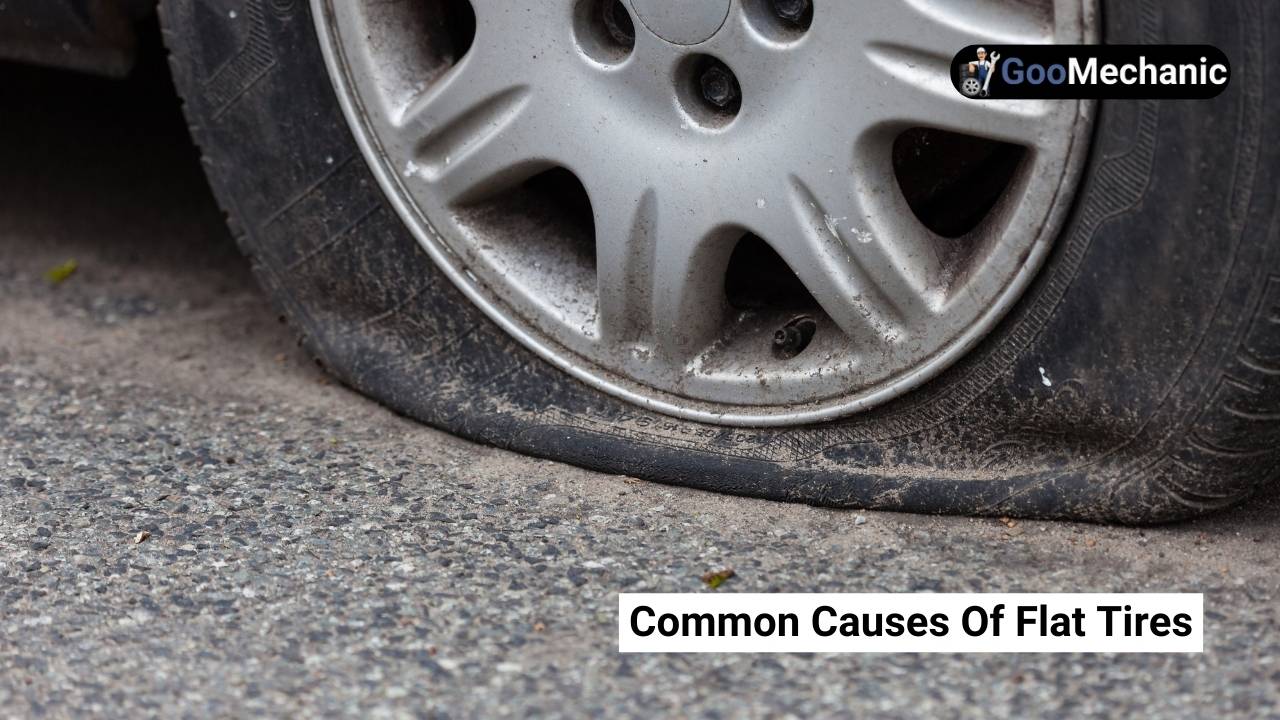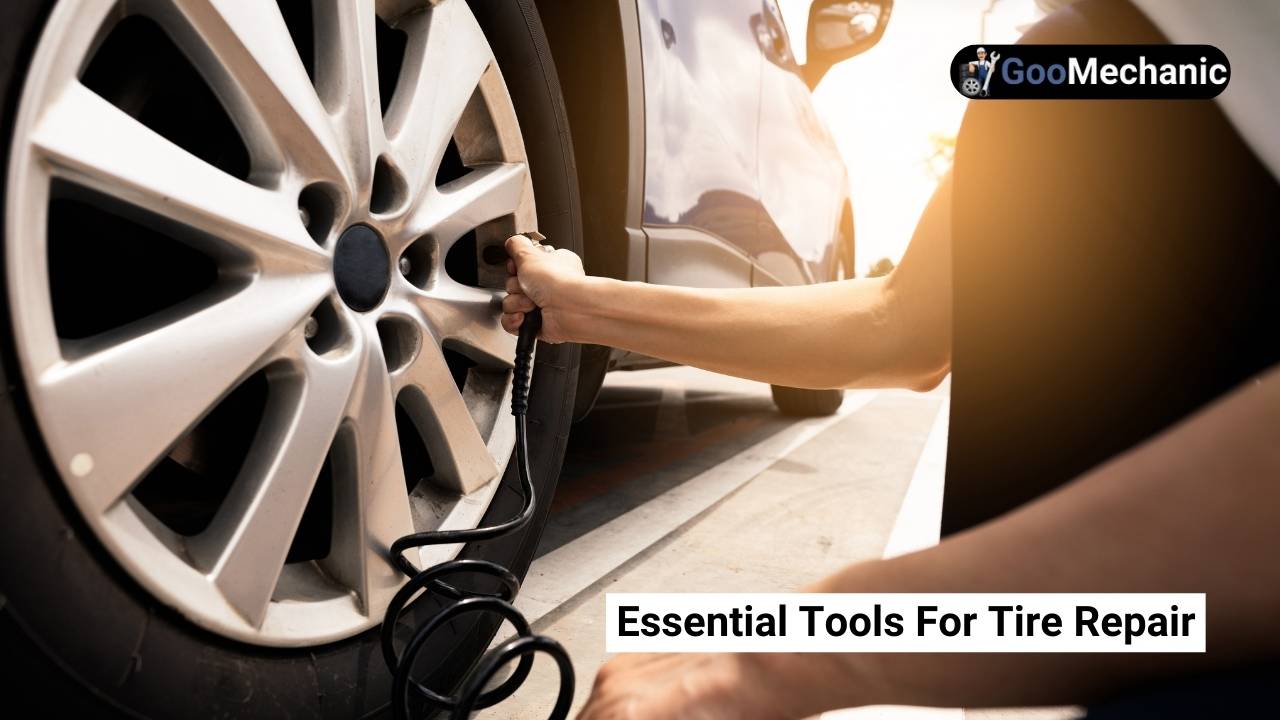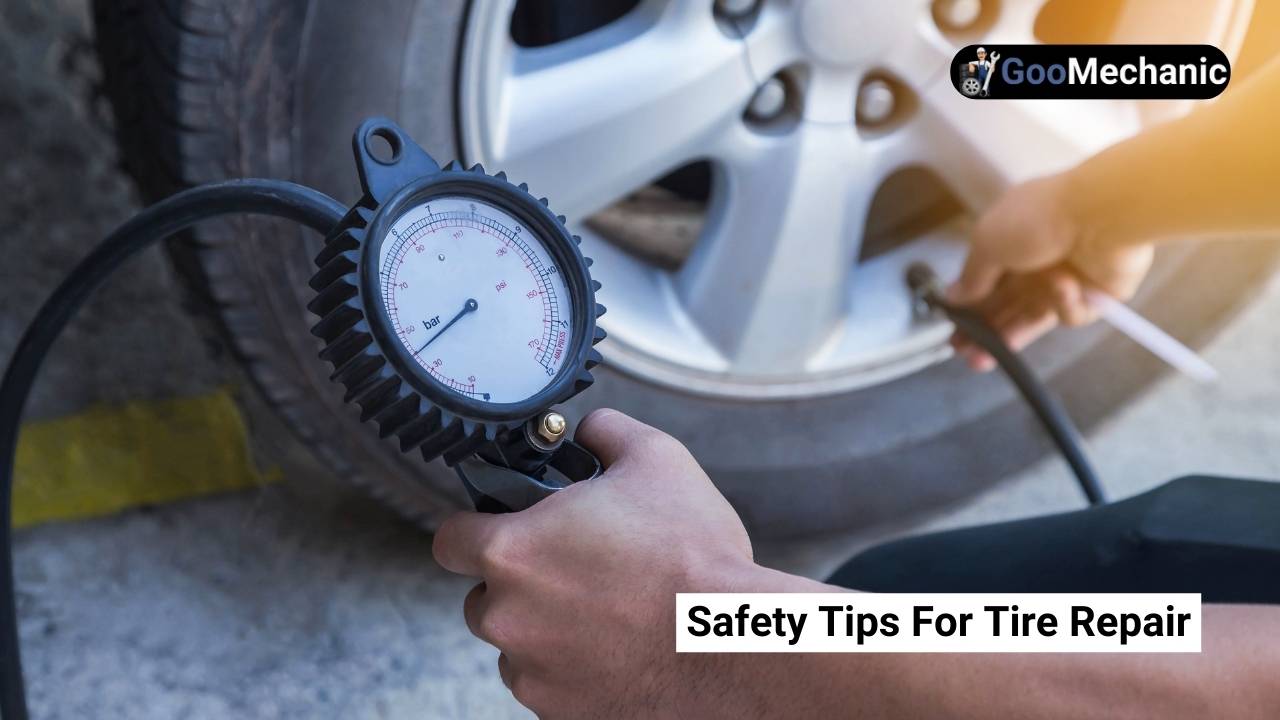Tools used to fill flat tires include portable air compressors and tire inflator kits. These tools are essential for quick repairs.
Flat tires can be a major inconvenience, especially when you’re on the road. Portable air compressors are compact devices that easily fit in your car, allowing you to inflate a flat tire in minutes. Tire inflator kits often come with sealant and an air compressor, providing a temporary fix to get you to the nearest service station.
These tools are user-friendly and designed for emergency situations. Investing in these handy tools can save you time and hassle, ensuring that you’re prepared for unexpected flat tires. Having them in your vehicle offers peace of mind and quick solutions.
Common Causes Of Flat Tires

Flat tires are a common issue for drivers. Understanding the causes can help prevent them. Below are the most common causes:
Punctures And Leaks
Sharp objects can cause punctures. These include nails, glass, and metal shards. Punctures create holes in the tire. Leaks happen when the tire is worn. Small cracks allow air to escape.
- Nails: Often found on roads
- Glass: Broken pieces can cut the tire
- Metal shards: Tiny pieces can create holes
Regularly check your tires for debris. Remove any sharp objects to avoid punctures. Inspect for wear and tear to prevent leaks.
Valve Stem Issues
The valve stem is crucial. It allows air to enter and exit the tire. If it is damaged, air can leak out. This causes the tire to go flat.
| Issue | Effect |
|---|---|
| Cracked Valve Stem | Air slowly leaks out |
| Loose Valve Core | Air escapes quickly |
| Dirt and Debris | Prevents proper sealing |
Check the valve stem for any visible damage. Ensure it is tightly sealed. Clean any dirt or debris around it. Proper maintenance can prevent many flat tires.
Essential Tools For Tire Repair

Having a flat tire can be stressful. But with the right tools, you can fix it yourself. Let’s explore some essential tools for tire repair.
Tire Pressure Gauge
A tire pressure gauge is crucial for checking your tire’s air pressure. Proper pressure ensures your tires wear evenly. It also improves fuel efficiency.
- Easy to use
- Portable
- Accurate readings
Keep one in your car for regular checks. It helps in maintaining optimal tire health.
Tire Repair Kit
A tire repair kit is essential for fixing punctures. It usually includes:
- Rubber cement
- Patches
- Plugging tool
Follow these steps to use a tire repair kit:
- Locate the puncture.
- Remove the object causing the puncture.
- Use the plugging tool to insert a plug.
- Apply rubber cement if needed.
- Allow it to dry, then check the pressure.
Always keep a repair kit in your vehicle. It saves you from being stranded.
Using A Tire Plug Kit
Flat tires are inconvenient. Having a tire plug kit can save the day. These kits are handy for quick repairs. They allow you to fix minor punctures without removing the tire. Below is a step-by-step guide on using a tire plug kit.
Identifying The Puncture
First, you need to find the puncture. Inflate the tire slightly to make the puncture visible. Listen for a hissing sound. You can also apply soapy water to the tire. Bubbles will form where the air escapes.
| Step | Description |
|---|---|
| 1 | Inflate the tire slightly. |
| 2 | Listen for a hissing sound. |
| 3 | Apply soapy water to find bubbles. |
Inserting The Plug
Once you find the puncture, you can insert the plug. Clean the area around the puncture with a reamer tool. This tool is usually included in your kit. Insert the reamer into the hole and twist it.
Next, prepare the plug. Take a plug strip and thread it through the insertion tool. Push the insertion tool into the puncture. Make sure the plug goes in halfway. Pull the tool out quickly. This will leave the plug inside the tire.
- Clean the puncture with the reamer tool.
- Thread the plug strip through the insertion tool.
- Push the tool into the puncture.
- Pull the tool out quickly, leaving the plug inside.
Finally, trim the excess plug. Use a knife or scissors. Reinflate the tire to the correct pressure. Check for any leaks. Your tire should now be ready for the road.
Benefits Of Portable Air Compressors
Portable air compressors have revolutionized tire maintenance. They bring ease and efficiency. They are compact and user-friendly. Portable air compressors save time and energy. They are indispensable for every driver.
Convenience On The Go
Portable air compressors offer unparalleled convenience. They fit easily in car trunks. You can use them anytime, anywhere. You won’t need to find a gas station. This tool ensures you’re always prepared. It brings peace of mind on long trips.
| Benefits | Details |
|---|---|
| Easy Storage | Compact and lightweight. |
| Quick Inflation | Inflates tires in minutes. |
| Emergency Use | Ideal for roadside emergencies. |
Choosing The Right Model
Picking the right portable air compressor is crucial. Consider the size and power. Some models are suitable for small cars. Others are better for trucks and SUVs. Look for models with additional features.
- Check the PSI rating.
- Look for built-in pressure gauges.
- Ensure it has a long power cord.
- Consider models with LED lights.
These features enhance usability. They make tire inflation easier. Always choose a reliable brand. Quality matters in emergency tools.
Tire Sealant Solutions
Flat tires can be a hassle. Tire sealant solutions offer a quick fix. These solutions help seal punctures. They work instantly to get you moving.
When To Use Sealants
Use sealants for minor punctures. They work well for nails and small holes. They are not for large damages. Check your tire’s condition before use.
Application Process
Follow these steps to apply sealant:
- Find the puncture on the tire.
- Remove any debris from the hole.
- Shake the sealant bottle well.
- Attach the nozzle to the tire valve.
- Press the bottle to release sealant.
- Rotate the tire to spread the sealant.
- Reinflate the tire to the correct pressure.
Check the tire for leaks. You should be good to go. Keep a sealant bottle in your car. It is a handy tool for emergencies.
| Sealant Type | Best For | Application Time |
|---|---|---|
| Liquid Sealant | Small punctures | 5-10 minutes |
| Foam Sealant | Medium punctures | 10-15 minutes |
Always read the instructions on the sealant bottle. Different brands have different steps. Make sure to follow them closely.
Keep your tires in good shape. Regular checks can prevent flats. Use sealants as a temporary fix. Visit a professional for a permanent solution.
Manual Vs. Electric Pumps
When it comes to filling flat tires, two popular options are manual and electric pumps. Each type has its unique advantages and drawbacks. Understanding these can help you choose the best tool for your needs.
Pros And Cons
| Pump Type | Pros | Cons |
|---|---|---|
| Manual Pumps |
|
|
| Electric Pumps |
|
|
Best Use Cases
Manual Pumps:
- Great for short trips.
- Perfect for bicycles.
- Ideal for emergencies.
Electric Pumps:
- Best for cars and trucks.
- Useful for frequent use.
- Good for inflating various items quickly.
Temporary Vs. Permanent Fixes
Flat tires are a common issue for drivers. Knowing the right tools and methods for fixing them is crucial. There are two main ways to handle flat tires: temporary fixes and permanent repairs. Understanding the difference helps ensure safety and efficiency on the road.
Short-term Solutions
Short-term solutions are quick fixes. They are meant to get you back on the road fast. These methods are not designed to last long.
- Tire Sealant: This is a liquid that seals small punctures. It’s easy to use and works instantly.
- Plug Kit: This kit includes a tool to insert a plug into the hole. It’s a temporary fix until a proper repair can be made.
Short-term solutions are great for emergencies. They allow you to drive to a service station for a permanent repair.
Long-term Repairs
Long-term repairs provide a more durable solution. They ensure your tire stays safe and functional over time.
- Patch Repair: A patch is applied to the inside of the tire. This method is strong and lasts a long time.
- Professional Tire Repair: A mechanic inspects and repairs the tire using specialized tools and techniques. This is the most reliable option.
Long-term repairs are essential for tire safety. They prevent further damage and extend the life of your tire.
| Solution Type | Method | Duration |
|---|---|---|
| Temporary | Tire Sealant | Short-term |
| Temporary | Plug Kit | Short-term |
| Permanent | Patch Repair | Long-term |
| Permanent | Professional Repair | Long-term |
Choosing between temporary and permanent fixes depends on your situation. For immediate needs, short-term solutions are best. For long-term safety, opt for professional repairs.
Safety Tips For Tire Repair

Repairing a flat tire can be tricky. Following safety tips ensures a smooth process. This section covers key safety tips for tire repair.
Working In Safe Environments
Always choose a flat, stable surface for tire repair. Ensure the area is well-lit. Avoid busy roads or places with heavy traffic. Use reflective gear if working roadside.
Keep a first-aid kit nearby. Have emergency contacts ready. Use wheel chocks to prevent the vehicle from moving. Make sure the parking brake is engaged.
These steps reduce the risk of accidents. Your safety comes first.
Proper Tool Usage
Use the right tools for the job. A jack, lug wrench, and tire patch kit are essential. Inspect tools for damage before use. Damaged tools can cause accidents.
Follow the instructions provided with each tool. Incorrect use can lead to injury. Never place your body under a raised vehicle. Always use jack stands for added safety.
Keep tools organized and within reach. This makes the process smoother and safer. Proper tool usage ensures a successful tire repair.
Frequently Asked Questions
What Do You Use To Fill A Flat Tire?
Use a tire repair kit, tire sealant, or a portable air compressor to fill a flat tire.
What Tools Do You Need For A Flat Tire?
You need a spare tire, a jack, a lug wrench, and wheel wedges to fix a flat tire. Don’t forget gloves and a flashlight for safety.
What Tools Do You Need To Change Your Own Tires?
To change your own tires, you need a jack, lug wrench, spare tire, wheel chocks, and gloves.
What Are The Tools Called To Change A Tire?
The tools needed to change a tire are a lug wrench, a jack, and a spare tire.
Conclusion
Keeping your tires properly inflated is essential for safety and performance. Using the right tools can make this task easier. From manual pumps to portable compressors, there are options for every driver. Always keep a reliable tire inflator in your vehicle.
This ensures you’re prepared for any unexpected flat tire situations.